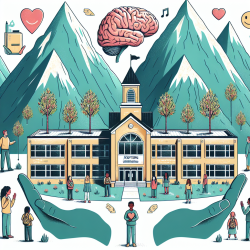Unlocking Access: How Geospatial Analysis Can Improve Movement Disorder Care
In the realm of healthcare, access to specialized care remains a formidable challenge, especially for individuals with movement disorders living in underserved regions. A recent study titled Geospatial Analysis of Persons with Movement Disorders Living in Underserved Regions sheds light on this issue, providing valuable insights that practitioners can leverage to enhance their skills and improve patient outcomes.
Understanding the Research
The study conducted a retrospective chart review of patients with movement disorders seen at the University of Florida Norman Fixel Institute for Neurological Diseases (UF-NFIND) between 2002 and 2017. It focused on identifying the geographic and demographic profiles of underserved individuals, defined as those relying on Medicaid or self-pay. The research highlighted significant distances traveled by these patients to receive care, often bypassing closer centers of excellence due to various barriers.
Key Findings
- Only 5.2% of the study population was classified as underserved, despite a higher percentage of Medicaid and uninsured individuals in the general population.
- Underserved patients traveled significantly further to receive care at UF-NFIND compared to their nearest movement disorders centers (MDCs).
- Common diagnoses among the underserved included tic disorders, dystonia, and Parkinson's disease.
- Barriers to accessing care included lack of referrals, financial constraints, and limited specialist availability.
Implications for Practitioners
For practitioners, these findings underscore the importance of understanding and addressing the barriers faced by underserved populations. Here are some actionable steps to consider:
- Enhance Referral Networks: Collaborate with primary care physicians to streamline referral processes and ensure underserved patients can access specialized care.
- Leverage Telemedicine: Utilize online therapy platforms like TinyEYE to provide remote consultations and therapy sessions, reducing the need for long-distance travel.
- Increase Awareness: Educate patients and caregivers about available resources and financial assistance programs to facilitate access to necessary treatments.
- Advocate for Policy Changes: Work with healthcare policymakers to address systemic barriers and improve access to care for underserved communities.
Encouraging Further Research
While this study provides valuable insights, it also highlights the need for further research to explore additional factors affecting access to care. Practitioners are encouraged to engage in research initiatives that investigate:
- The impact of telemedicine on access and outcomes for underserved populations.
- Strategies to enhance multidisciplinary care delivery in remote areas.
- Longitudinal studies on the effectiveness of interventions aimed at reducing access disparities.
By embracing data-driven approaches and fostering collaboration, practitioners can play a pivotal role in improving outcomes for children and adults with movement disorders, ultimately bridging the gap in healthcare access.
To read the original research paper, please follow this link: Geospatial Analysis of Persons with Movement Disorders Living in Underserved Regions.










